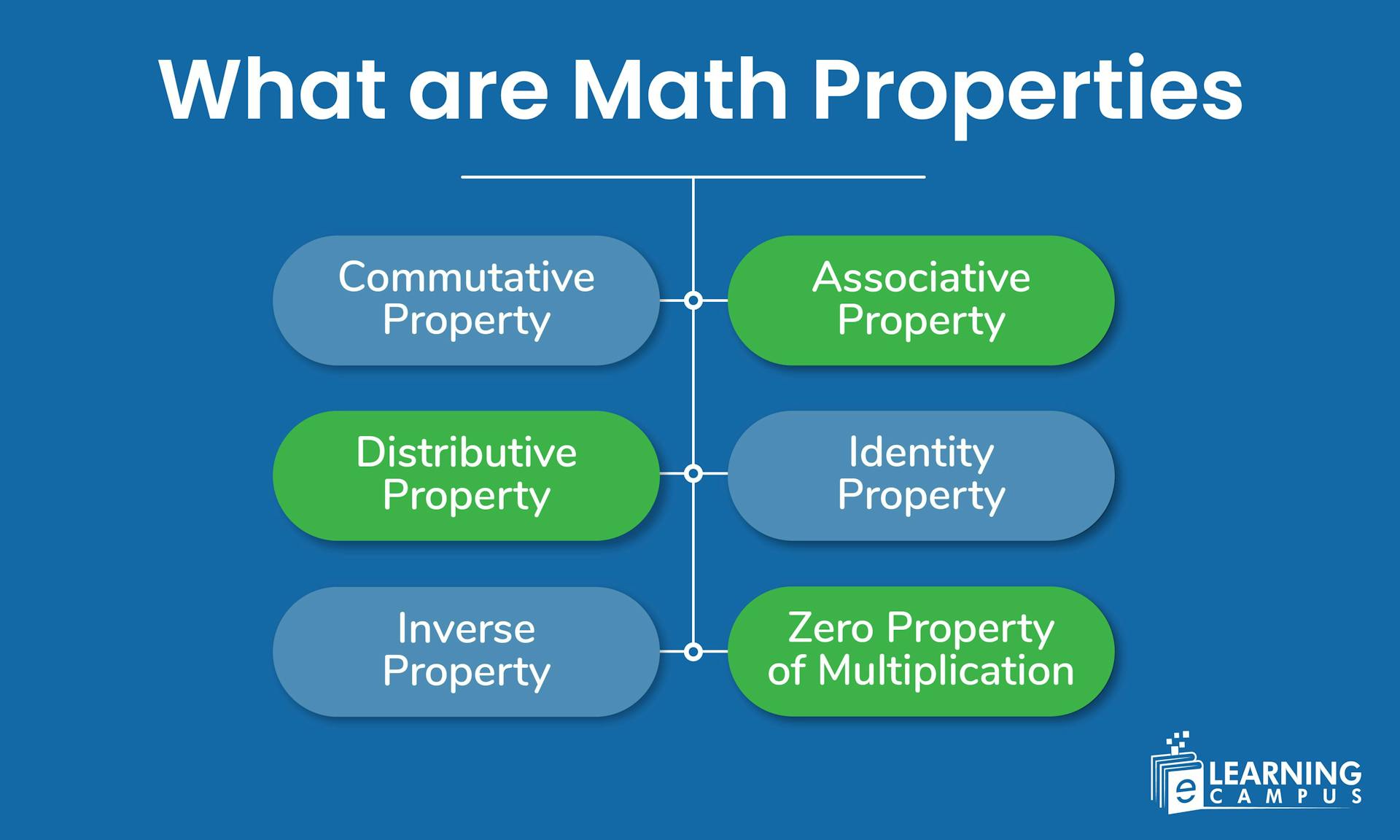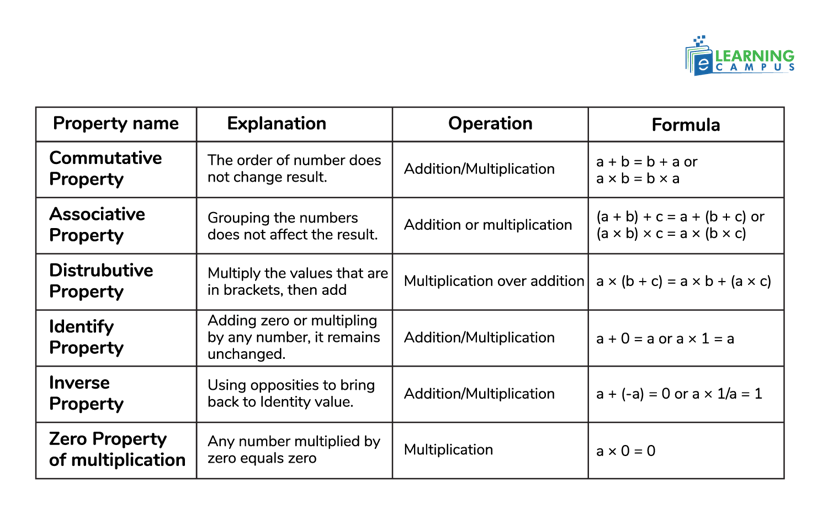What are Math Properties

Have you ever wondered why 3+5 is always equal to 5+3 or why multiplying a number by 1 never changes a number? Mathematics is more than just numbers and equations. There are some rules and patterns on the basis of which numbers are operated. Mathematics follows a set of special rules called the mathematical properties of operations. These properties describe how numbers behave in different operations, ensuring consistency and logic in every calculation.
In this blog, we will explore the main types of properties in math, their definitions, and examples that make them simple to understand.
What are the Properties in Math
A math property is a law or rule that describes how numbers work in different operations. These properties never change. They are true for all real numbers. If we understand them, then math becomes riser, more logical, and less confusing. Basic properties of operations in math are :
- Commutative property
- Associative property
- Distributive property
- Identity property
- Inverse property
- Zero Property of Multiplication
Commutative property
The commutative property tells us that the order of numbers does not change the result. It states that numbers can be rearranged in an operation without changing the outcome.
This property works for addition and multiplication but not for subtraction or division.
For addition
For Multiplication
Get help with our online math tutoring service
2.Associative Property
The associative property explains that when you add or multiply three or more numbers, the way you group them doesn't change the result.
For Addition
For Multiplication
The grouping doesn't affect the result.
3. Distributive Property
The Distributive property links multiplication and addition. It explains that multiplying a number is multiplying each addend separately and then adding the products. It explains that multiplying a number sum gives the same result as multiplying each addend separately and then adding the products. The distributive property is used frequently in algebra to simplify and expand expressions.
4. Identity Property
The Identity property shows that certain numbers keep others unchanged when used in an operation.
Addition Identity
0 is the identity property because adding it does not change a number
For Example
Multiplication Identity
1 is the multiplicative identity because multiplying by it does not change a number
For Example
5.Inverse property
The inverse property tells us that every number has an opposite or reciprocal that brings it back to the identity value. This property helps in simplifying and balancing the equations.
Additive inverse
For example
Multiplicative Inverse
Example
Zero property of Multiplication
This property is simple yet powerful. When you multiply any number by zero, the answer is always zero.
For example
Properties of Equality in Math
Other properties are widely used. The property of equality helps us understand how numbers relate to each other when they are equal. They are often used when we are solving an equation. These properties include:
- Symmetric property
- Reflexive property
- Transitive property
Symmetric property
The symmetric property states that if one expression is equal to another, then the other expression is also equal to the first one.
For example
a=b,b=a
Reflexive equality
The reflexive property states that any quantity is equal to itself.
a=a
Transitive property
The transitive property states that if the first value is equal to the second, the second value is equal to the third, and the third value is equal to the first.
a=b, b=c, a=c
All Math properties Examples
Learn the math properties with examples, which help you understand how numbers behave in every operation.
- Commutative property
In addition
In multiplication
- Associative property
In addition
In Multiplication
- Distributive property
- Identity property
In addition
In multiplication
- Inverse property
Additive inverse
Multiplicative inverse
- Zero property of multiplication
If we multiply any value by zero, then the answer is always zero.
Math Property Chart
A math property chart is a simple and visual way to show the basic rules that numbers follow during mathematical operations. It lists the main properties along with their Formula and examples.
This chart helps you quickly remember how each property works. Here are the math property chart:

Conclusion
Math properties are the foundation of arithmetic and algebra. They describe how numbers perform in different operations, like addition or multiplication. In our blog, we provide detailed information on basic properties of math with examples that help you understand the math easily and strengthen your basic knowledge for higher mathematical concepts. Once you know these rules, math becomes logical and much easier to handle.
